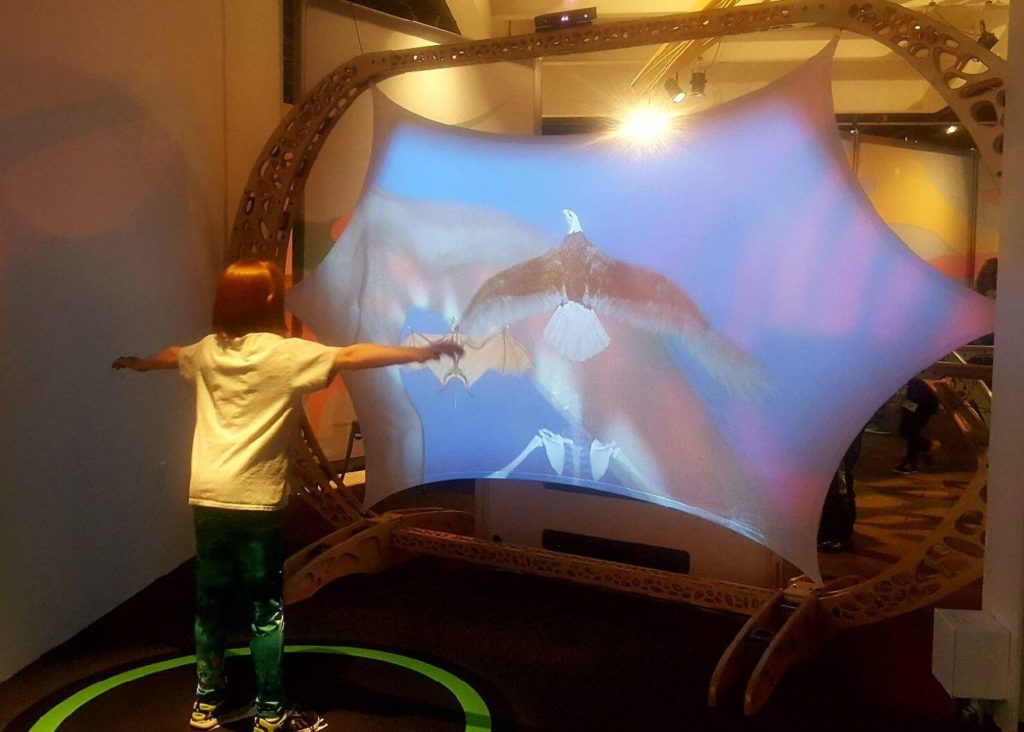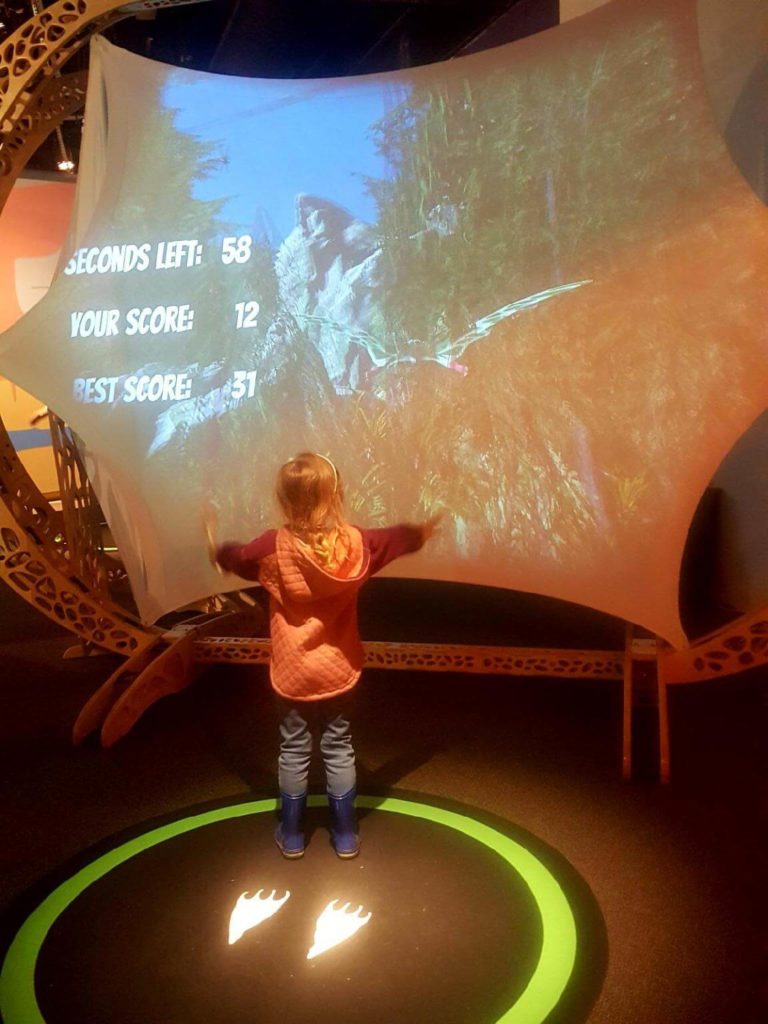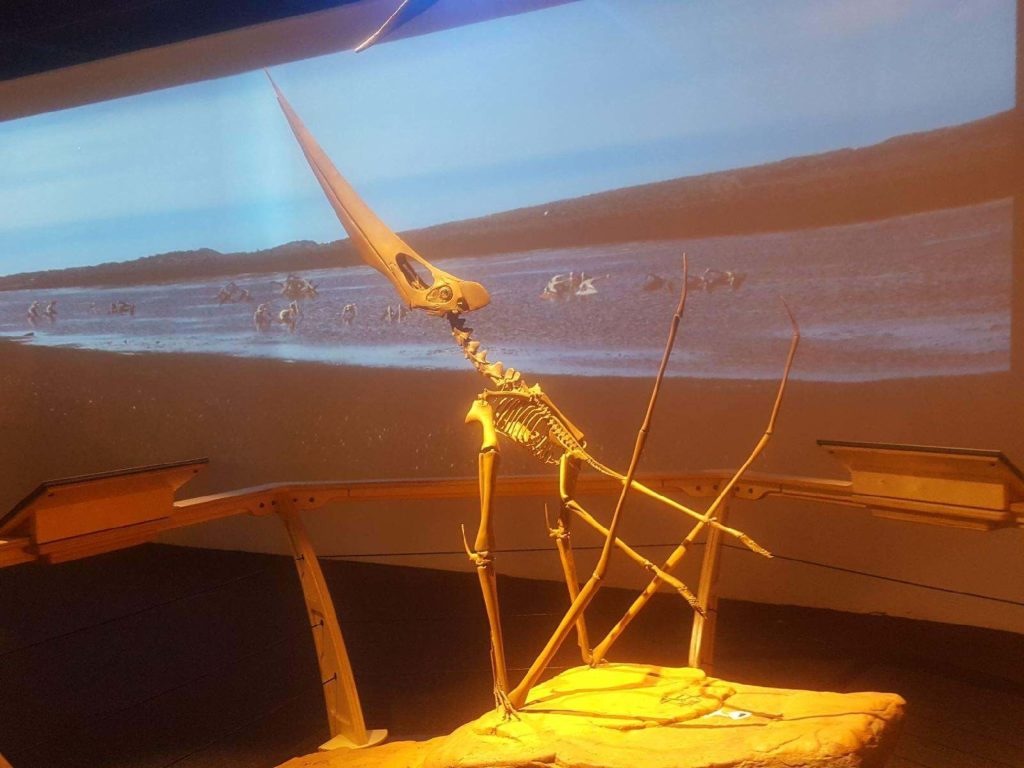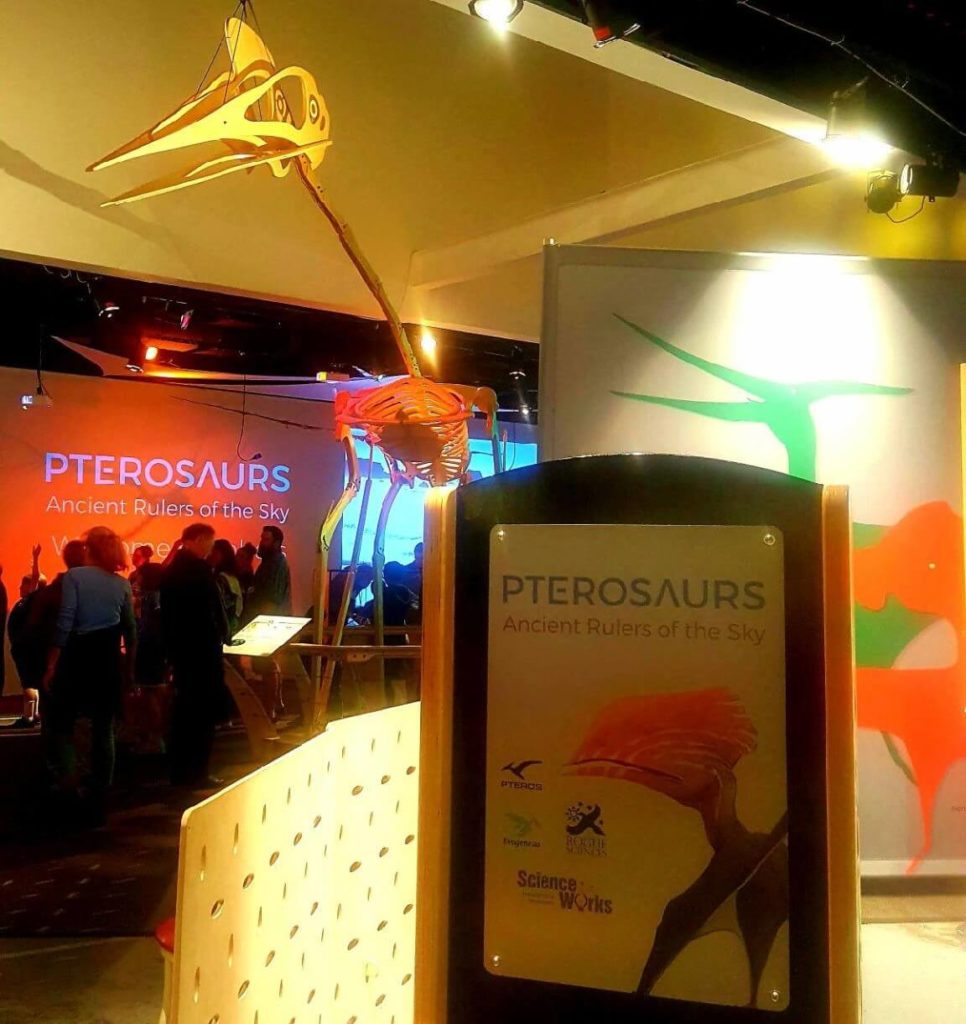BRAND NEW WILD MUSIC EXHIBIT PROVIDES A MUST-SEE, MUST-DO,
MUST-HEAR EXPERIENCE
Wild Music: Sounds & Songs of Life opens February at ScienceWorks Hands-On Museum
-
Whales compose, bullfrogs chorus, songbirds greet the dawn,
 and people everywhere sing and dance. What do we all have in common? Visitors of all ages will find out in February, when Wild Music: Sounds & Songs of Life, a brand new, hands-on exhibit that explores sound and music in nature and in life, makes its debut at ScienceWorks Hands-On Museum located at 1500 E Main St. in Ashland, Oregon.
and people everywhere sing and dance. What do we all have in common? Visitors of all ages will find out in February, when Wild Music: Sounds & Songs of Life, a brand new, hands-on exhibit that explores sound and music in nature and in life, makes its debut at ScienceWorks Hands-On Museum located at 1500 E Main St. in Ashland, Oregon.
Wild Music invites visitors of all ages to expand their understanding of what makes music. Through whimsical, hands-on activities, they’ll not only hear the music that surrounds them every day, but they’ll see and even feel it too. They’ll discover that nature is filled with “musicians” that create distinct musical masterpieces to communicate with and relate to one another. And they’ll explore how human music is inspired by the music of other living creatures – from tiny insects to giant whales.
Highlights of Wild Music include:
-
Three different “soundscapes” that invite visitors to explore sound and music that comes from the ocean, the forest, and the city. Visitors will learn to interpret spectrograms, or “pictures,” of bird songs, learn what whale cries tell us about the animal’s life cycle, see samples of instruments from around the world, experiment with how sound travels underwater, explore how music influences memory, and more.
-
The Jamming Room, a soundproof practice studio where visitors can use pre-recorded audio soundscapes, animal voices, percussion instruments, and live vocals to compose their own songs.
-
The Bioacoustic Lab, where visitors can experiment with how the human voice works and how it compares to that of other animals, specifically birds. Here, visitors can explore a model of the human larynx and the bird syrinx, use an electrolarynx to “speak” without using their voices, and use a set of vibrating metal reeds to “feel” sound.
-
The Power of Sound and Music Theater, where visitors can sit back, relax, and experience sounds from around the world. The seven-minute, sound-driven video demonstrates – both visually and audibly – how animals use sound to identify themselves, communicate, and form and nurture social groups.

 be partnering with Rogue World Music and local organizations around the Rogue Valley to provide unique programming at the Museum for the exhibit’s duration (Saturday, February 2 – Monday, September 2). This exhibit is made possible by Richard and Elizabeth LeVitt, a Community Grant of the Oregon Community Foundation, Lithia 4 Kids, the Olsrud Family Fund of The Oregon Community Foundation, the Jackson County Cultural Coalition and Anonymous donors.
be partnering with Rogue World Music and local organizations around the Rogue Valley to provide unique programming at the Museum for the exhibit’s duration (Saturday, February 2 – Monday, September 2). This exhibit is made possible by Richard and Elizabeth LeVitt, a Community Grant of the Oregon Community Foundation, Lithia 4 Kids, the Olsrud Family Fund of The Oregon Community Foundation, the Jackson County Cultural Coalition and Anonymous donors.











 engines whining and horns blaring, operate across hundreds of scale miles of track, through working signals and crossing gates at the Highway 99 railroad crossing, between Medford and Klamath Falls, on the Pacific and Eastern Railroad, including the heavily forested climb out of Keno along the Klamath River. Children can help operate trains on a special HO layout.
engines whining and horns blaring, operate across hundreds of scale miles of track, through working signals and crossing gates at the Highway 99 railroad crossing, between Medford and Klamath Falls, on the Pacific and Eastern Railroad, including the heavily forested climb out of Keno along the Klamath River. Children can help operate trains on a special HO layout.

 This must see Holiday spectacle showcases many fun and unique lights shaped into everything from the classic Santa to dinosaurs and spaceships. New to the lightshow this year are character depictions from Disney’s Frozen. You will also be able to see the World’s Largest Nutcracker!
This must see Holiday spectacle showcases many fun and unique lights shaped into everything from the classic Santa to dinosaurs and spaceships. New to the lightshow this year are character depictions from Disney’s Frozen. You will also be able to see the World’s Largest Nutcracker!
 agon rides through the lights are also available on Friday and Saturday’s from 5:30 pm to 10pm and on Sunday’s from 5:30 pm to 9 pm for $5.
agon rides through the lights are also available on Friday and Saturday’s from 5:30 pm to 10pm and on Sunday’s from 5:30 pm to 9 pm for $5.








